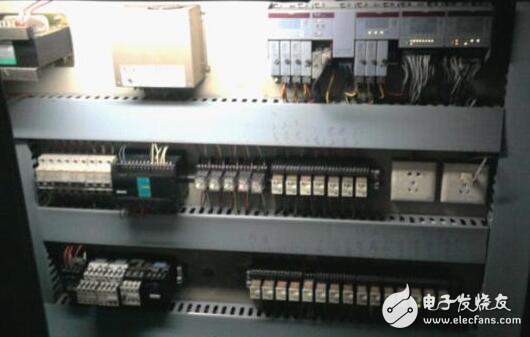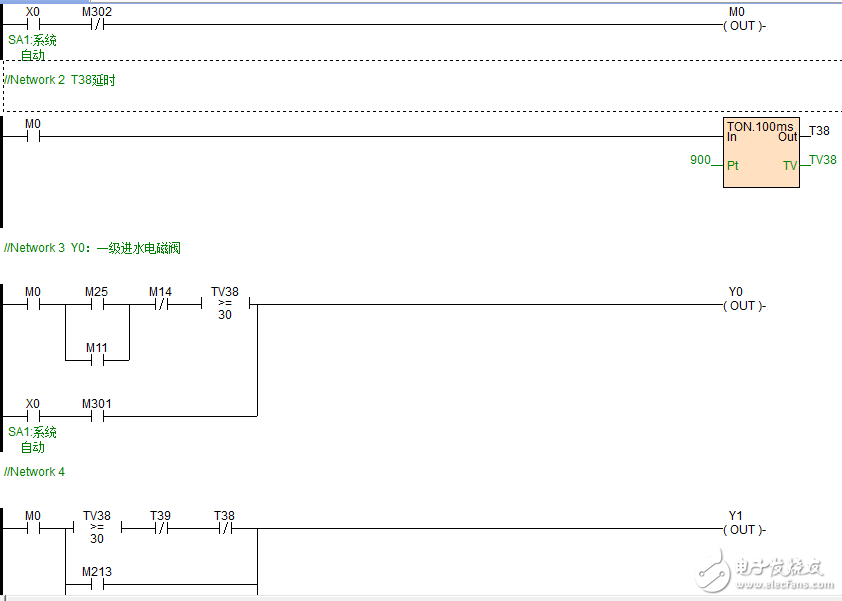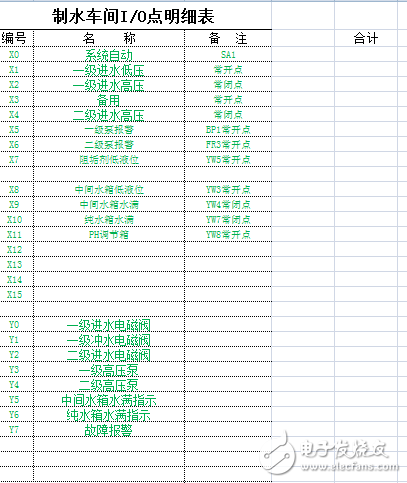The natural flow of water entering a solution through a semi-permeable membrane or from a solution to another relatively concentrated solution is called osmosis. Reverse osmosis is to apply a higher pressure than the natural osmotic pressure on one side of the concentrated solution, reverse the direction of natural osmosis, and press the water in the concentrated solution to the other side. This is exactly the opposite of the normal osmosis process in nature. This special semi-permeable membrane is called a reverse osmosis membrane. Reverse osmosis technology is the most advanced and most energy-saving and effective membrane separation technology today. Its principle is that under the action of higher than the osmotic pressure of the solution, other substances cannot pass through the semi-permeable membrane and leave these substances and moisture out. Because the membrane pore size of the reverse osmosis membrane is very small (only about 10A), it can effectively remove dissolved salts, colloids, microorganisms, organic matter, etc. in the water (removal rate as high as 97-98%). The reverse osmosis system has the advantages of good water quality, low energy consumption, no pollution, simple process and easy operation. The essential difference between two-stage reverse osmosis equipment and single-stage reverse osmosis is not big. Its characteristic is that the filtering effect is better than single-stage reverse osmosis. Simply put, after the raw water is filtered by the first-stage reverse osmosis equipment, the organic matter and impurities contained in the water will be much reduced after the second-stage filtration. Under normal circumstances, the manual water inlet valve is normally open. There are high and low level gauges on the original water tank. The solenoid valve is opened for low liquid level and water is stopped for high liquid level. After the raw water passes, it reaches the quartz sand and graphite filter. Quartz sand filter is a kind of filter. The filter material uses quartz sand as the filler, which is beneficial to remove impurities in the water. It also has the advantages of low filtration resistance, large surface area, strong acid and alkali resistance, and good pollution resistance. The unique advantage of the quartz sand filter is that by optimizing the design of the filter material and the filter, the adaptive operation of the filter is realized. The filter material has strong adaptability to the raw water concentration, operating conditions, pre-treatment process, etc., namely When filtering, the filter bed automatically forms a state of sparse top and bottom density, which is beneficial to ensure the quality of the effluent under various operating conditions. The filter material is fully dispersed during backwashing, and the cleaning effect is good. Sand filter can effectively remove suspended solids in water, and has obvious removal effect on colloids, iron, organic matter, pesticides, manganese, bacteria, viruses and other pollutants in water; and has fast filtration speed, high filtration accuracy, and large interception capacity. Etc. Mainly used in power, electronics, beverages, tap water, petroleum, chemicals, metallurgy, textiles, papermaking, food, swimming pools, municipal engineering and other process water, domestic water, recycled water and waste water deep disposal fields. The role of quartz sand filtration: 1. Quartz sand filter is a pressure filter, using refined quartz sand filter material filled in the filter, when the influent water flows through the filter layer from top to bottom, the suspended solids and viscous particles in the water are removed , Thereby reducing the turbidity of the water; 2. Mainly used for water treatment to remove turbidity, softened water, electrodialysis, reverse osmosis pretreatment, also can be used for surface water, groundwater treatment, etc., can effectively remove suspended solids in water, organic matter, colloids, silt Wait; 3. It can be widely used in electronic power, petrochemical industry, metallurgy and electroplating, paper and textile, pharmaceutical dialysis, food and beverage, drinking water, factory and enterprise water, swimming pool, and can meet the needs of liquid filtration in various industries; 4. Quartz sand filtration is one of the most effective means to remove suspended solids in water. It is an important unit in advanced sewage treatment, sewage reuse and water supply treatment. Its function is to further remove the flocculated pollutants in the water. It achieves the purpose of water purification through the interception, sedimentation and adsorption of the filter material. Scope of application: 1. Used in industrial water, domestic water and municipal water supply systems that require effluent turbidity ≤5mg/L and can meet drinking water quality standards; 2. Removal of suspended solids and solids in industrial wastewater; 3. Can be used as pretreatment equipment in ion exchange softening and desalination systems, coarse filtration equipment for industrial water supply that does not require high water quality; and used in swimming pool circulating treatment systems, cooling circulating water purification systems, etc. run 1. The first-level reverse osmosis started operation. The newly-started secondary equipment should perform long-term low-pressure flushing: maintain the initial valve position of the secondary. Note: The pressure of the primary product water should not exceed the set safety pressure (operations such as partial discharge, lowering of the primary operating pressure, etc. can be performed). 2. Security filter: Check the filter element of the security filter to ensure that there is no blockage. 3. Open the forward water valve of the security filter to introduce the pretreated water into the RO equipment, open the exhaust valve of the security filter to exhaust the air in the security filter; open the exhaust valve of the high-pressure pump to exhaust the air in the high-pressure pump; The treated water is introduced into the membrane to exhaust the air in the membrane. Host is down 1. Open the concentrated water throttle valve and flush for 90-180 seconds at low pressure. 2. Turn off the "Secondary High Pressure Pump" switch, and turn off the secondary host switch. 3. Turn off the "primary high pressure pump" switch. 4. Cut off the power supply of the system and observe that the meter reading of the system returns to zero. 5. Close the inlet and outlet valves of each pretreatment unit, drain the water level of the original water tank, and drain the water level of the production water tank to the bottom of the water tank. Figure 1 Control cabinet Figure 2 Haiwell C48S2R PLC The following is a screenshot of part of the program: Figure 3 Screenshot of the program Allocation table of input and output parts of bipolar sub-penetration equipment: Figure 4 Input and output of bipolar sub-infiltration equipment When the reverse osmosis equipment is operating abnormally, such as abnormal water output or poor water quality, the equipment must be overhauled. 1. Undervoltage When the RO high-pressure pump cannot reach the specified operating pressure, it cannot operate at the rated pressure, which will cause the product water volume to drop and the water discharge volume to decrease. In such cases, perform maintenance as follows: 1) Pump: Isolate the pump and check how much the pump pressure can reach; check the water flow in the correct operating procedure. 2) Security filter: Check the filter element of the security filter to ensure that there is no blockage. 3) Raw water flow: Check whether the system has sufficient raw water. 4) Pressure gauge: Check the debris in the pressure gauge assembly, remove all visible debris, and replace the assembly. Make sure that the pipe is not inserted too deep inside the fitting (joint), otherwise it may cause flow restriction and cause erroneous pressure readings. If the above steps do not solve the problem, the table should be replaced. 2. The flow of pure water is abnormal The abnormal flow of pure water is often due to membrane problems, as described below: 1) Low water production: usually due to the deposition of inorganic and organic substances on the surface of the membrane, which causes the water output to decrease and the quality of the water to deteriorate, so the membrane should be washed. 2) A large amount of permeated water flows out: it may be caused by membrane damage. Check as follows: a. The sealing ring of the pressure vessel or the salt water sealing gasket of the membrane is cut off or fails. b. The reverse osmosis membrane may be perforated, causing the water output to rise and the water quality to decrease. c. The membrane may be damaged by freezing, so protective measures should be taken when it is used in an environment below zero degrees Celsius. As an electrical engineer, especially a technician in the chemical industry, the requirements for PLC stability are particularly high. Water-making equipment has always been an important equipment of our company. If there is a problem with the equipment, it will directly affect the production. I have used PLCs of other brands for many years. This time I tried Haiwell PLC mainly because of the reputation of Haiwell as a domestic brand and its advantages in brand performance. With the mentality of trying it out, in order to transform the water system equipment to save energy, communicate with the sales staff and technical exchanges in the early stage, I chose Haiwell C series PLC as a control core component of the technological transformation. Get Haiwell PLC to be the first to feel that this is really a domestic PLC? Regardless of the craftsmanship, they are far superior to some foreign brands, with clear logos, elegant appearance, and plenty of weight. In order to get started with this PLC as soon as possible, to be honest, the main reason is that I don’t understand the PLC’s psychology. I downloaded the software and videos according to the instructions and started to learn by myself. In order to facilitate technical exchanges, Haiwell has also established a QQ group for those of us who are not familiar with it. The technicians are very patient. Even a small question will be answered carefully, and a demonstration will be given. Through learning and programming, the PLC is formally programmed. The simulation that comes with the PLC is really good. You can directly understand the problem of the program. Online help is very convenient. The 48K programming capacity of Haiwell C series is handy. Generally, economical PLCs of other brands are less than 48k, so if you write more complicated programs, they are restricted. It is a pity that the C series cannot be equipped with a communication module. The 485 communication port is connected to the module, and the 232 communication port is connected to the touch screen, and online programming is not possible. It is a bit troublesome. On the whole, the C series is still a very good PLC, economical, and easy to handle for programs that are not too complicated. I heard that Haiwell PLC will soon release the Ethernet host, and the modules are all equipped with Ethernet, which makes programming more convenient and can be done with a single network cable. Friendly reminder: If it is better to equip the customer with a programming cable when the customer purchases the product, is my request a bit high? LED Tunnel light,Tunnel light of high protection grade Kindwin Technology (H.K.) Limited , https://www.ktlleds.com



I. Introduction